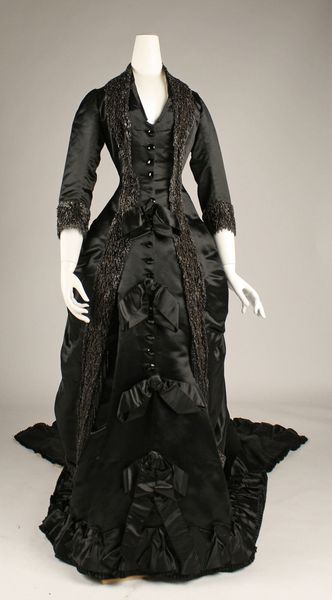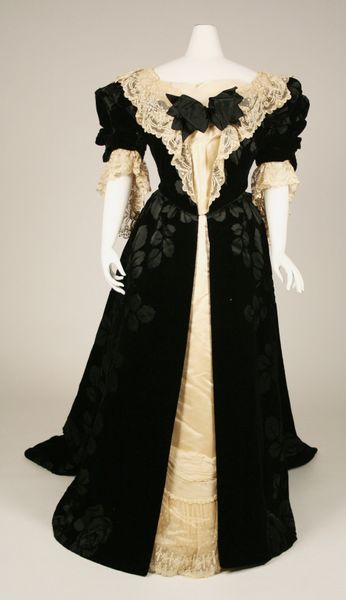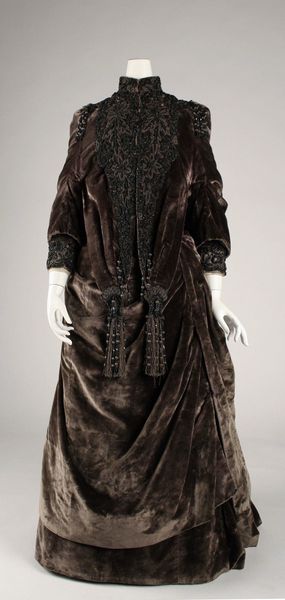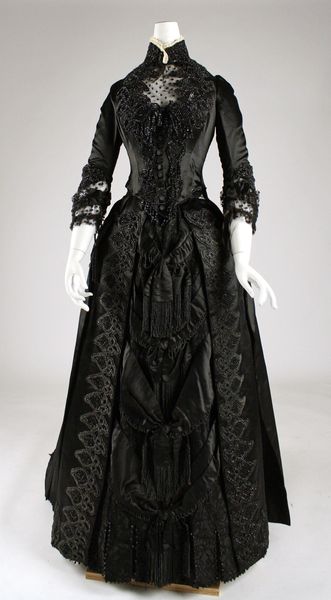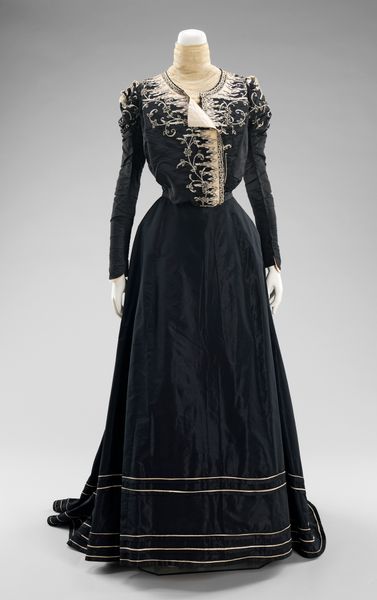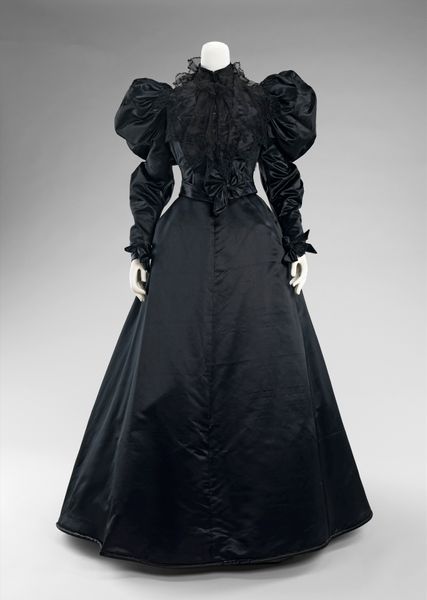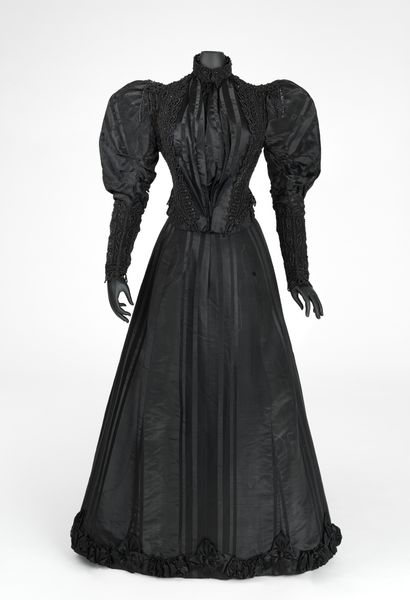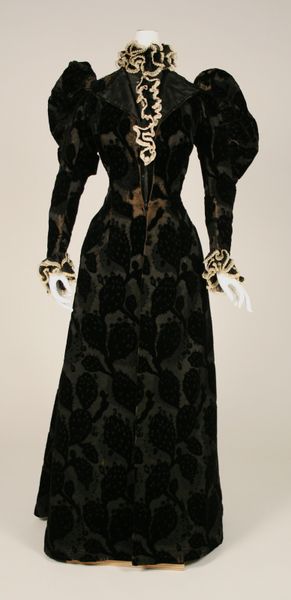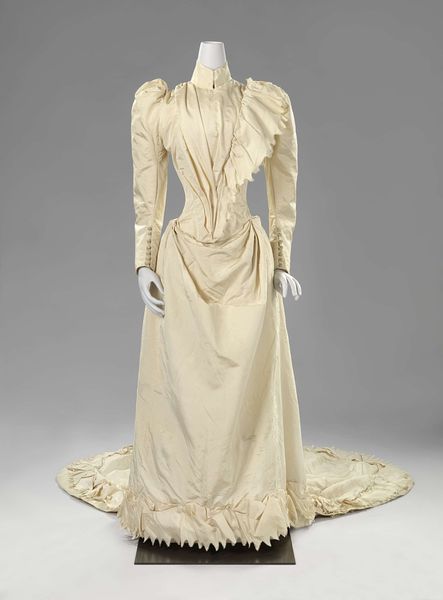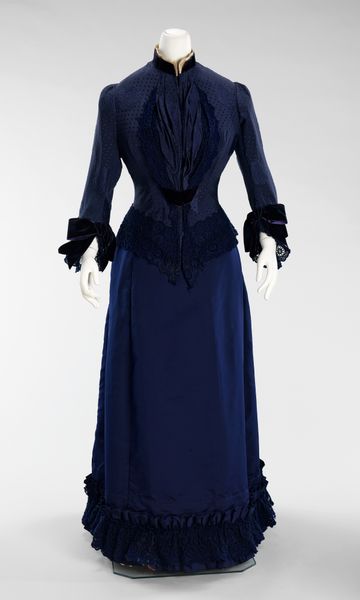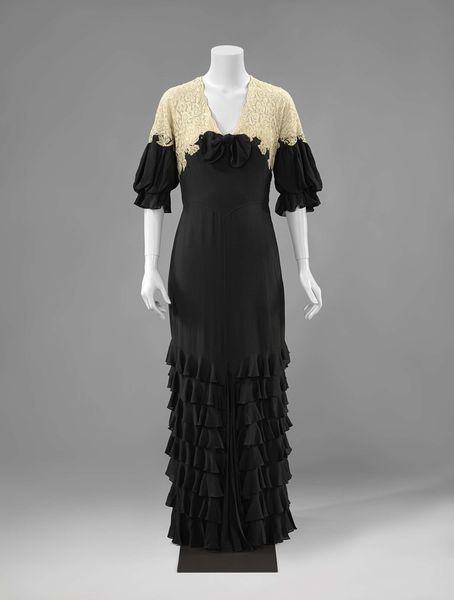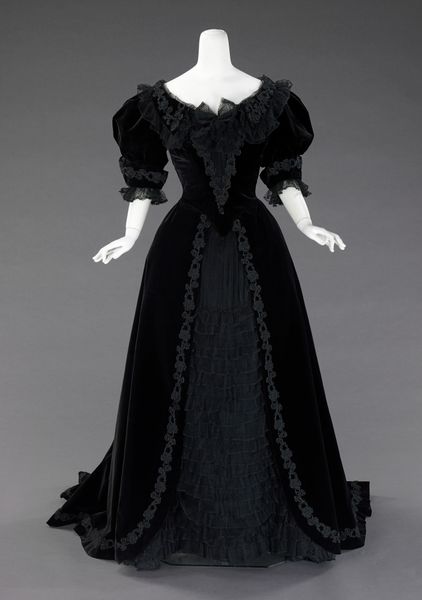
textile, photography
#
fashion design
#
fashion mockup
#
textile
#
fashion based
#
photography
#
wearable design
#
fashionable
#
wedding dress
#
clothing photo
#
fashion sketch
#
clothing design
#
bridal fashion
Dimensions: length 132 cm, length 142 cm, waist 62 cm
Copyright: Rijks Museum: Open Domain
Curator: This photograph captures an arresting object: a black wedding dress, dating back to 1885, author unknown. What are your first thoughts? Editor: Woah, a black wedding dress! It's unexpectedly dramatic, a bit gothic, yet still formal. All that glossy black fabric gathered and draped so meticulously… Makes you wonder what the story is behind it, doesn't it? Curator: Indeed. The use of black in a garment typically associated with purity and new beginnings is striking. Consider the social context: Did it signify mourning? Or was it a subversive fashion statement challenging the norms around women's roles and expectations of the time? Was it, perhaps, a re-use of material given the cost? Editor: Perhaps the bride just really loved black? Seriously, though, the cut is impeccable – that wasp waist, the subtle detailing on the sleeves. It speaks of high-end craftsmanship. I imagine the woman who wore this carried herself with a certain defiant elegance. Curator: Precisely. The textile itself would have been expensive and suggests access to resources. It also speaks to the global textile trade and the labor involved in creating such a complex garment. Editor: I keep picturing the bride, stepping out of a carriage, a flash of dark silk against the gaslight... Who was she marrying? Was she happy? I bet she turned heads! It exudes so much individuality. Curator: Precisely. The absence of overt ornamentation beyond the refined lines indicates the possibility that this was not mourning wear but, rather, a choice—perhaps reflecting her unique style and self-determination within a constrained society. Editor: Well, looking at it has given me something to chew on about tradition and rebelling and a little something about my own relationship to all things sartorial. It's a knockout image, really. Curator: I agree. It prompts us to examine not only the craftsmanship and materiality, but also the narratives we project onto historical artifacts and the fascinating dance between convention and individuality in clothing.
Comments
rijksmuseum about 2 years ago
⋮
After 1820 most wedding dresses were white, and so this black example is unusual. The bride had her dress made by Wilhelmine Wildermann, a seamstress who owned a shop in one of the well-known main streets of Karlsruhe (Baden-Württemberg). The cut of wedding dresses in this German federal state was always in keeping with fashion. The colour, however, was generally black as women traditionally wore black dresses to church.
Join the conversation
Join millions of artists and users on Artera today and experience the ultimate creative platform.
